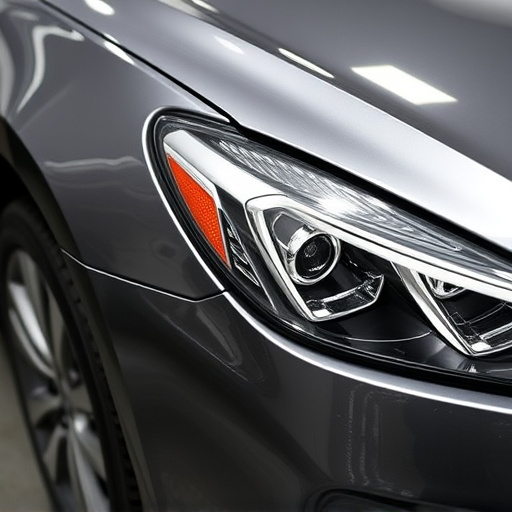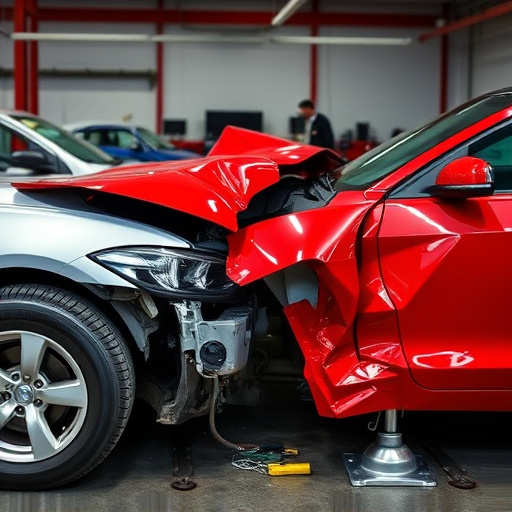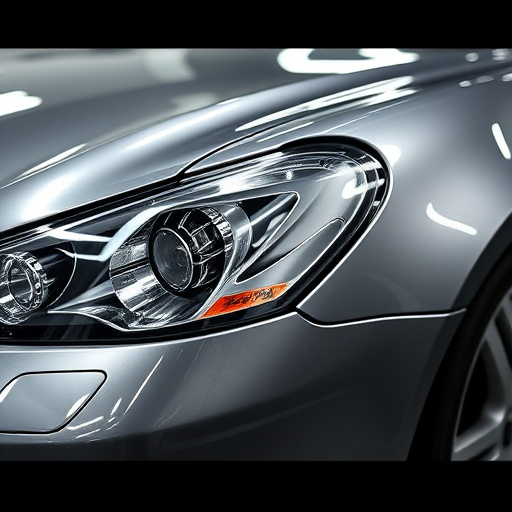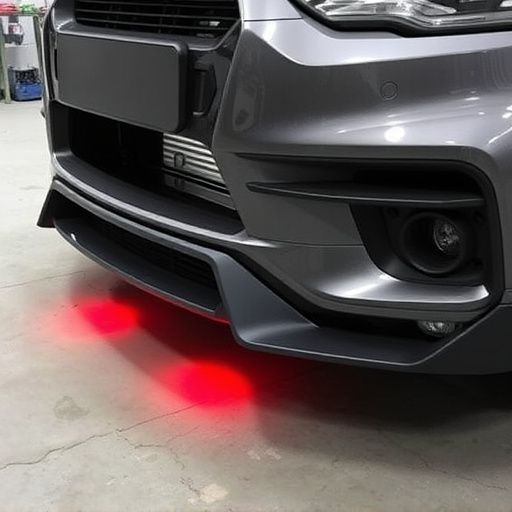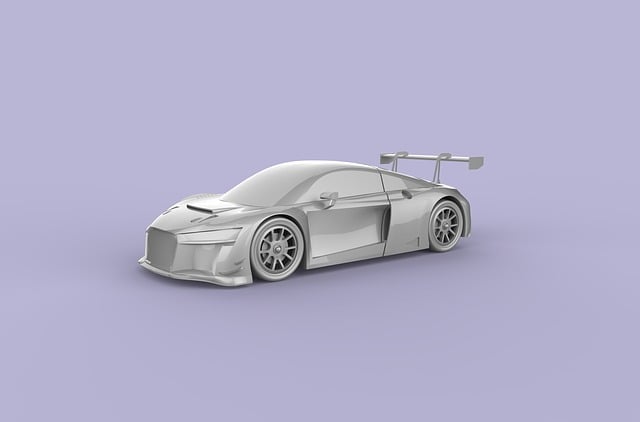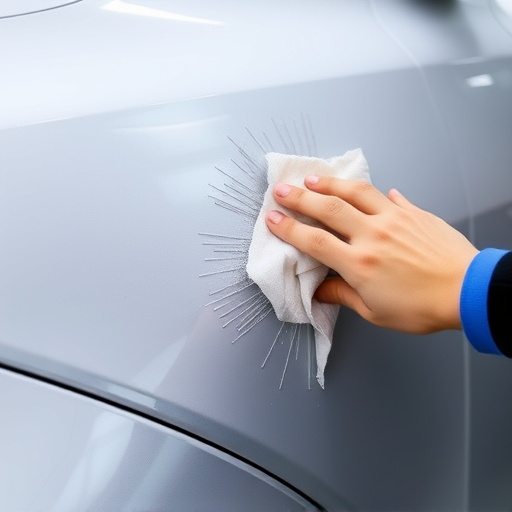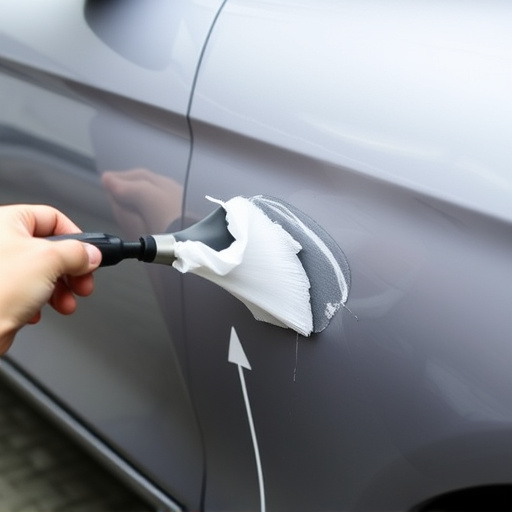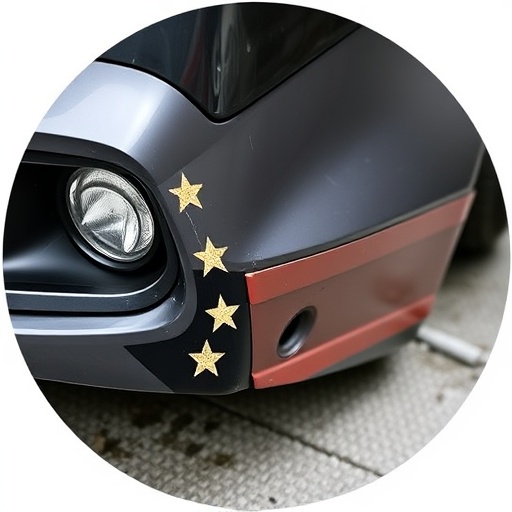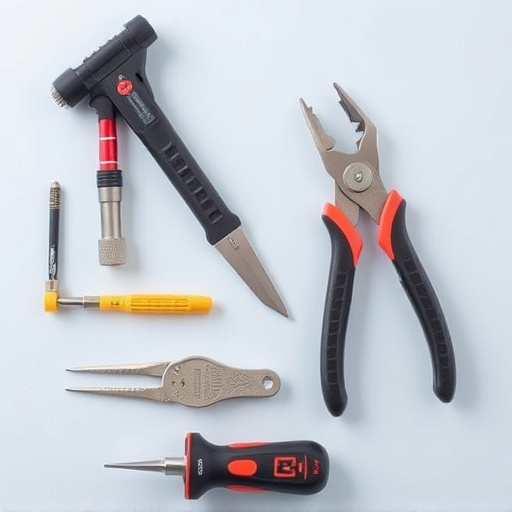Metallic paint damage from environmental factors and human interaction requires prompt action. Early identification is key to prevention through professional repair or DIY methods. Essential tools for metallic paint repair include sandpaper, clay bars, polishing compound, and clear coat. The meticulous process involves inspection, sanding, polishing, painting, and adding a clear coat for protection and aesthetic appeal.
Revive your car’s stunning metallic finish with our advanced tips for flawless paint restoration. Understanding common causes of metallic paint damage is key, as is selecting the right tools and materials for optimal results. We guide you through a step-by-step process, ensuring a professional-looking repair that enhances your vehicle’s allure. Discover expert techniques for achieving a vibrant, like-new finish with our comprehensive metallic paint repair strategies.
- Understanding Metallic Paint Damage and Causes
- Tools and Materials for Restoration Success
- Step-by-Step Guide to Perfect Metallic Repair
Understanding Metallic Paint Damage and Causes
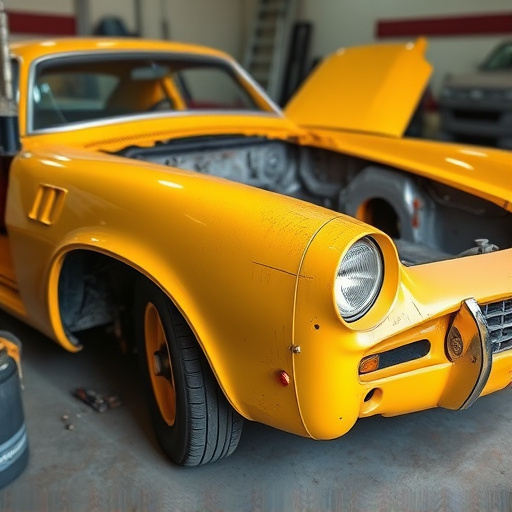
Metallic paint damage can manifest in various forms, from minor scratches and swirls to deeper dents and chips. Understanding the causes behind these issues is a crucial first step in achieving flawless metallic paint restoration. One common culprit is environmental factors, such as exposure to harsh sunlight, acid rain, or industrial pollutants, which can degrade the paint’s finish over time. These elements contribute to oxidation and corrosion, leading to a loss of luster and color fading.
Another significant cause is human interaction, including car washes that use aggressive brushes or poor detailing practices. Even minor accidents like stone chips or bug splatters can create microscopic damage, causing the metallic paint to weaken and eventually fail. Identifying these issues early on is key; prompt action through professional vehicle paint repair or DIY car dent removal techniques can prevent further damage, ensuring your vehicle’s bodywork retains its stunning metallic finish.
Tools and Materials for Restoration Success
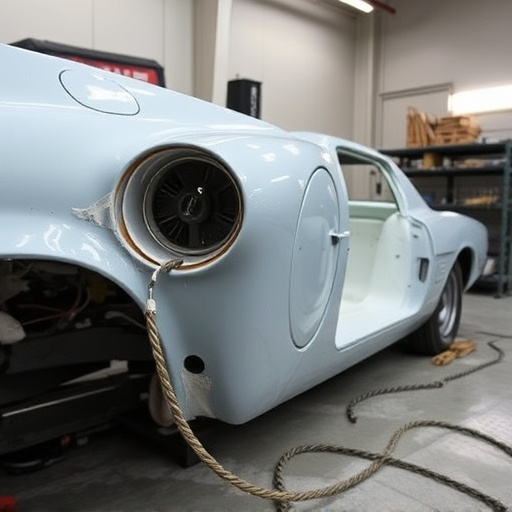
When it comes to metallic paint restoration, the right tools and materials are essential for achieving flawless results. For this task, a dedicated restorer should invest in high-quality sandpaper ranging from coarse to fine grits. These will be used to gently buff away damaged or faded paint layers without compromising the underlying metal. Additionally, a set of precision brushes, both natural and synthetic, is invaluable for reaching tight spots and applying restorative compounds evenly.
Among other crucial materials for metallic paint repair are clay bars for removing bonded contaminants, a polishing compound suitable for metal, and a clear coat to protect the restored surface. In a collision repair center or car repair shop, these essentials form the backbone of any metallic paint restoration project, ensuring that the finished product not only looks good but also lasts for years to come.
Step-by-Step Guide to Perfect Metallic Repair
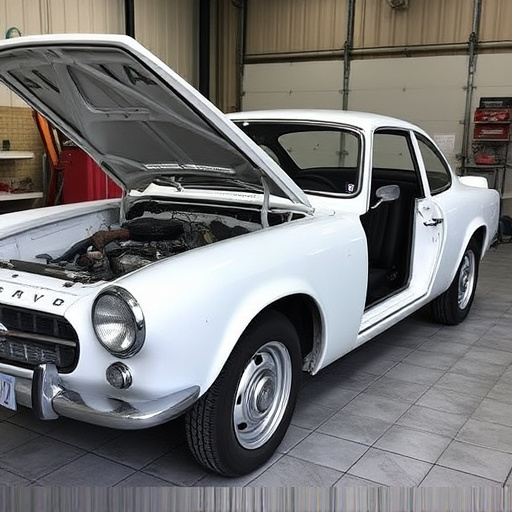
Restoring metallic paint to its former glory involves a meticulous process that, when followed step-by-step, can deliver flawless results. Begin by inspecting the damaged area for pitting, scratches, or dents using a light source to identify any hidden defects. Next, gather your tools and materials, including a fine-grit sandpaper, metal polish, a applicator pad, and a high-quality metallic paint that matches your vehicle’s original finish (refer to your car’s owner manual for the correct color code).
Carefully sand the damaged area with progressively finer grits to smooth out imperfections. Always work in the direction of the grain. After sanding, wipe away dust with a clean cloth and inspect the surface again. If necessary, repeat the sanding process until you achieve a smooth base. Apply metal polish using circular motions, following the manufacturer’s instructions. Once polished, allow the surface to dry completely before applying the metallic paint. Use a small brush or spray applicator for precise coverage, ensuring even coats for a professional finish. Let the paint dry according to the product guidelines, and consider adding a clear coat for added protection and shine (this could be especially beneficial when undertaking auto repair near you).
Restoring metallic paint to its former glory can be a challenging yet rewarding process. By understanding the damage, equipping yourself with the right tools and materials, and following a systematic guide, you can achieve flawless results in your metallic paint repair project. These advanced tips ensure that your restored surface not only looks good but also withstands the test of time, enhancing the aesthetic appeal of your vehicle or any metallic surface.
